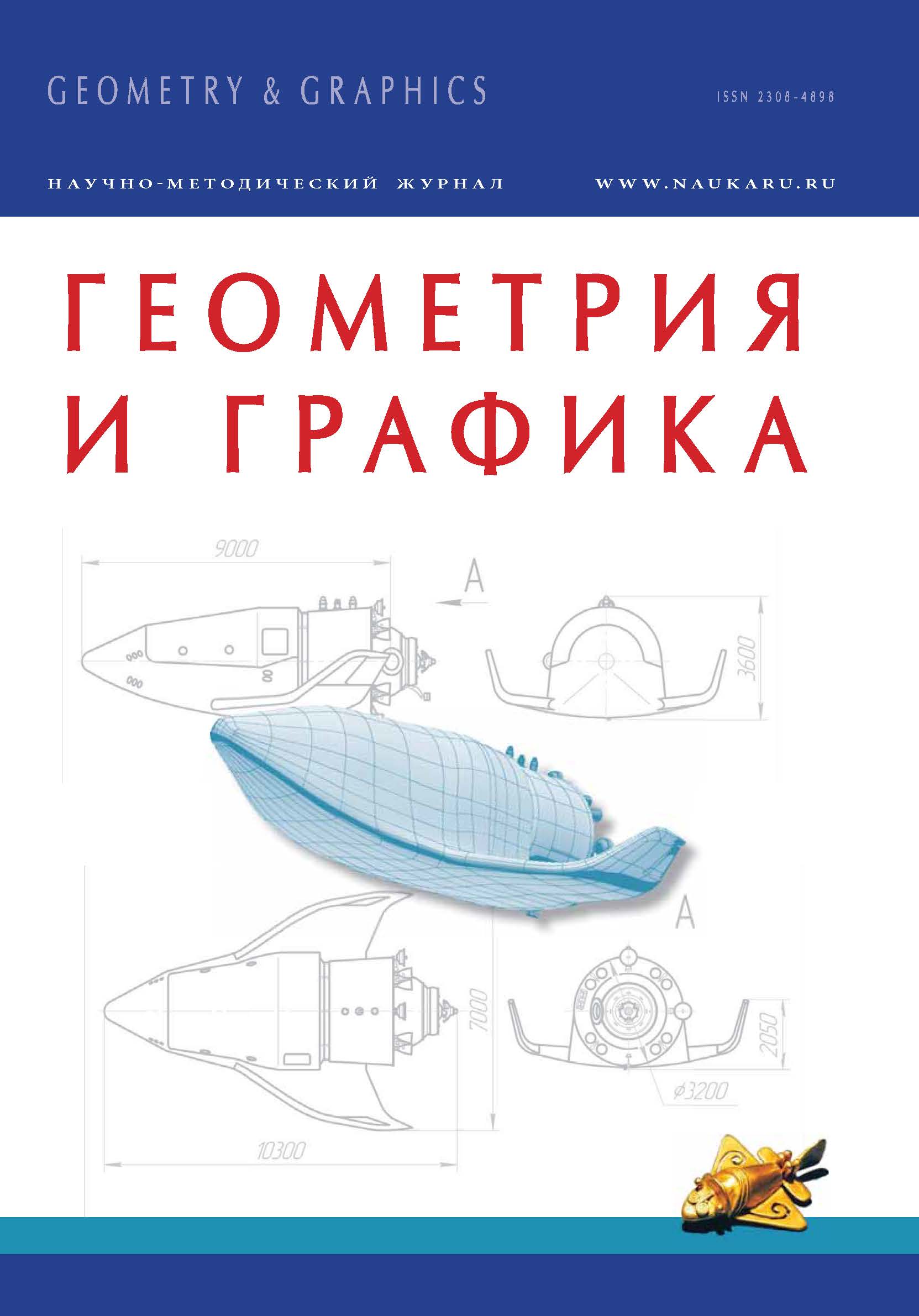Moskva, Moscow, Russian Federation
Fractals are geometric objects, each part of which is similar to the whole object, so that if we take a part and increase its size to the size of the whole object, it would be impossible to notice a difference. In other words, fractals are sets having scale invariance. In mathematics, they are associated primarily with non-differentiable functions. The concept of "fractal" (from the Latin "Fractus" meaning «broken») had been introduced by Benoit Mandelbrot (1924–2010), French and American mathematician, physicist, and economist. Mandelbrot had found that seemingly arbitrary fluctuations in price of goods have a certain tendency to change: it turned out that daily fluctuations are symmetrical with long-term price fluctuations. In fact, Benoit Mandelbrot applied his recursive (fractal) method to solve the problem. Since the last quarter of the nineteenth century, a large number of fractal curves and flat objects have been created; and methods for their application have been developed. From geometrical point of view, the most interesting fractals are "Koch snowflake" and "Pythagoras Tree". Two classes of analogues of the volumetric fractals were created with modern three-dimensional modeling program: "Fractals of growth” – like Pythagoras Tree, “Fractals of separation” – like Koch snowflake; the primary classification was developed, their properties were studied. Empiric data was processed with basic arithmetic calculations as well as with computer software. Among other things, for fractals of separation the task was to create an object with an infinite surface area, which in the future might acquire great importance for the development of the chemical and other industries.
fractal, fractal curve, monomers, Pythagoras tree, Koch snowflake, fractals of growth, fractals of separation.
История фракталов
Фракталы – геометрические объекты, каждая часть которых подобна целому, так что если взять часть и увеличить до размеров целого, разницы заметить будет невозможно. Иными словами, фракталы – множества, обладающие масштабной инвариантностью [1]. В математике же фракталы, прежде всего, тесно связаны с недифференцируемыми функциями. Так, до XIX в. математики имели дело только с функциями, которые задают гладкие кривые [8]. Однако 18 июля 1872 г. Карл Вейерштрасс [12] в Королевской Академии наук Пруссии представил работу, в которой было показано, что для натурального числа a и числа 0 < b < 1 ряд не дифференцируем (рис. 1).
1. Asmus V.F. Problema intuitsii v filosofii i matematike [The problem of intuition in philosophy and mathematics]. Moscow, Mysl Publ., 1965.
2. Barketova K. Fractal-Drakon Harter-Heituey [Fractal Dragon Harter-Heituey]. Kompjuternaja grafika [Computer graphics], 2013. Available at: http://grafika.me/node/85
3. Berenschot Erwin J. W., Jansen Henri V. and Niels R. Fabrication of 3D fractal structures using nanoscale anisotropic etching of single crystalline silicon. Journal of Micromechanics and Microengineering. 2013, V. 23, I. 5.
4. Bolotov V.N. Obobshjonnaja funktsija Kontora i perehodnoe fraktalnoe rassejanie [Generalized Cantor function and transition fractal scattering]. Zhurnal tehnicheskoj fiziki [Technical Physics Journal]. 2002, V. 72, I. 2, pp. 8-15.
5. Bondarenko S. i M. Zagadochnyj besporyadok: istorija fraktalov i oblast ih primenenija [Mysterious disorder: history of fractals and their applications]. Available at: http://www.3dnews.ru/754657
6. Bortshova N.L. Matematicheskaja teorija voln Elliota kak instrument analiza fondovogo rynka [Broshkova NL mathematical theory of waves of Eliot as a tool for the analysis of the stock market]. Mir [World]. 2012, V. 11, pp. 67-71. Available at: http://cyberleninka.ru/article/n/matematicheskaya-teoriya-voln-eliota-kak-instrument-analiza-fondovogo-rynka
7. Vorobiev N.N. Chisla Fibonachchi [Fibonacci numbers]. Moscow, Nauka Publ., 1978.
8. Kalinina E.A. Istorija fraktalnoj geometrii [History of fractal geometry]. Matematika, kotoraja mne nravitsa [Math, which I like], 2010. Available at: http://hijos.ru/2010/12/26/istoriya-fraktalnoj-geometrii/
9. Kalinina E.A. Krivye Gilberta [Hilbert curve]. Matematika, kotoraja mne nravitsa [Math, which I like], 2014. Available at: http://hijos.ru/2014/03/07/krivye-gilberta/
10. Kostjushkova N.I. Teorija haosa [Chaos Theory]. Moscow, Gramota Publ., 2010, I. 12 (43), pp. 80-84. Available at: http://www.gramota.net/materials/1/2010/12/25.html
11. Koch N. F. H. von. Sur une courbe continue sans tangente, obtenue par une construction géométrique élémentaire. Stockholm. 1904.
12. Kotchina P.J. Karl Vejershtrass: 1815-1897. Moscow, Nauka Publ., 1985. (in Russian)
13. Loskutov A.U. Otsharovanie haosa, Uspehi fizicheskih nauk [Fascination of chaos. Successes Physical Sciences]. Moscow, Nauka Publ., 2010. V. 180, I. 12, pp. 1305-1329.
14. Romanovsky M.Yu Fundamentalnye bluzhdanija Levi [Functional walk Levi]. Trudy institute obtshej fiziki im. A.M. Prohorova [Proceedings of the Institute of General Physics of A.M. Prokhorov], 2009, V. 65, pp. 20-28.
15. Shahov D. Derevo Pifagora [Pythagoras Tree]. Moscow, Fraktaly i nauka Publ., 2013. Available at: http://m-rush.ru/glavnaya1/item/255-derevo-pifagora.html?tmpl=component&;print=1
16. Shahov D. Ispolzovanie 3-D fraktalov na nanourovne [Using the 3-D fractals at the nanoscale]. Available at: http://mrush.ru/glavnaya1/item/287-ispolzovanie-3-d-fraktalov-nananourovne.html
17. Shahov D. Fraktalnaja molekula [Fractal molecule]. Available at: http://m-rush.ru/glavnaya1/item/289-fraktalnaya-molekula.html
18. Shvets A.N. Vyvod formuly Bine [Derivation of Bina formula]. Avalable at: http://mech.math.msu.su/~shvetz/54/inf/perl-problems/chFibonacci_sIdeas.xhtml
19. Tchepin E.V. O fraktalnyh krivyh Peano. [On Fractal Peano curves]. Trudy МIАN [Works МIАN], 2004, V. 247, pp. 204-303.
20. Elliott R.N. Zakon prirody. Sekret vselennoj [Nature’s Law - The Secret of the Universe]. Мoscow, Mir Publ., 2009.






